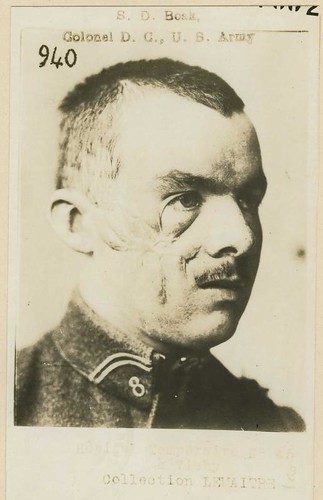The Historical Collections guys and the exhibit guy finished putting together an exhibit yesterday and I went over and shot some of the process as well as the finished product. Because I know for a fact, yes a fact, that not one of them will write about it, I'm doing it because I'm so responsible. And because I love behind-the-scenes stuff and assume you do too.
The exhibit is contained in one wall-mounted cabinet and is called Facial Reconstruction. We have really cool and interesting plaster models and they're what make up the bulk of the cabinet. Here are four on them on a cart, waiting to go into the cabinet. They're various stages of one person's reconstruction.

Here are two of the three guys working on the cabinet.

They used the line of the bottom row of models (the ones shown on a cart above) to mark a line for the next row up. Here's that bottom row being hung.

Here's the exhibits guy using a spiffy, bendy thing on the drill to make a hole for the next row up.

A test fit on the second row.

Here's a close-up of them on a cart.

The models are all safely tucked away again and the labels are installed.

Here are a couple different models, both from World War 1. The first one shows a nasal splint after the surgeon rebuilt his nose from a flap of skin from his forehead. Note the scar.

This one shows an appliance used to keep his fractured upper jaw aligned correctly within his face.

This is a more contemporary model. This man sustained a severe head injury and a portion of his skull was removed to allow his swollen brain to expand. A CT scan of his head allowed the doctors to create a resin model of his skull and then make a cranial plate
based on a mirror image of the undamaged side of his skull. This view shows a portion of the skull removed. It's art, isn't it?

And finally, the finished exhibit. Ta-Da!!




















